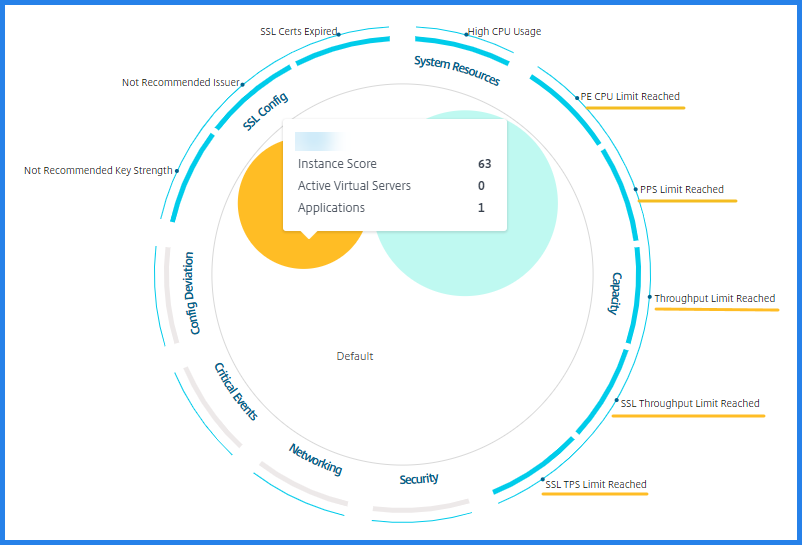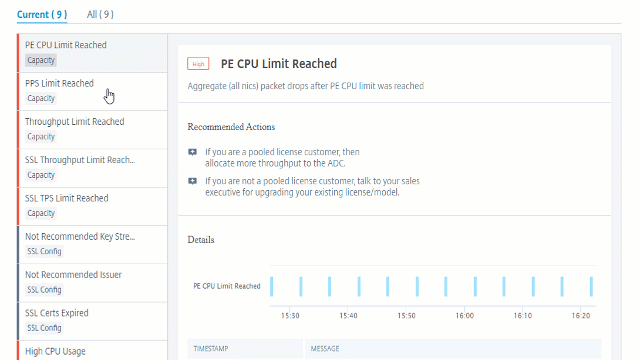-
-
-
-
View NetScaler capacity issues
-
-
-
Scenarios for Flexed or Pooled license expiry and connectivity issues behavior
-
Configure NetScaler Console as the Flexed or Pooled license server
This content has been machine translated dynamically.
Dieser Inhalt ist eine maschinelle Übersetzung, die dynamisch erstellt wurde. (Haftungsausschluss)
Cet article a été traduit automatiquement de manière dynamique. (Clause de non responsabilité)
Este artículo lo ha traducido una máquina de forma dinámica. (Aviso legal)
此内容已经过机器动态翻译。 放弃
このコンテンツは動的に機械翻訳されています。免責事項
이 콘텐츠는 동적으로 기계 번역되었습니다. 책임 부인
Este texto foi traduzido automaticamente. (Aviso legal)
Questo contenuto è stato tradotto dinamicamente con traduzione automatica.(Esclusione di responsabilità))
This article has been machine translated.
Dieser Artikel wurde maschinell übersetzt. (Haftungsausschluss)
Ce article a été traduit automatiquement. (Clause de non responsabilité)
Este artículo ha sido traducido automáticamente. (Aviso legal)
この記事は機械翻訳されています.免責事項
이 기사는 기계 번역되었습니다.책임 부인
Este artigo foi traduzido automaticamente.(Aviso legal)
这篇文章已经过机器翻译.放弃
Questo articolo è stato tradotto automaticamente.(Esclusione di responsabilità))
Translation failed!
View the capacity issues in a NetScaler instance
When a NetScaler instance has consumed most its available capacity, packet-drop may occur while processing the client traffic. This issue causes low performance in a NetScaler instance. By understanding such NetScaler capacity issues, you can proactively allocate additional licenses to steady the NetScaler performance.
In the Circle Pack View, you can view the NetScaler instance capacity issues if exists.
To view NetScaler capacity issues,
- Navigate to Infrastructure > Infrastructure Analytics.
- Select the circle pack view.
Note
In Infrastructure Analytics, the circle-pack and tabular views display the events and issues that occurred in the last one hour.
The following illustration suggests the capacity issues exist in the selected instance:

The issues are categorized on the following capacity parameters:
- Throughput Limit Reached – The number of packets dropped in the instance after the throughput limit is reached.
- PE CPU Limit Reached - The number of packets dropped on all NICs after the PE CPU limit is reached.
- PPS Limit Reached – The number of packets dropped in the instance after the PPS limit is reached.
- SSL Throughput Rate Limit – The number of times the SSL throughput limit reached.
- SSL TPS Rate Limit – The number of times the SSL TPS limit reached.
View recommended actions to solve capacity issues
NetScaler Console recommends actions that can solve capacity issues. To view the recommended actions, perform the following steps:
-
In Infrastructure > Infrastructure Analytics, select the tabular view.
-
Select the instance that has capacity issues and click Details.

-
In the instance page, scroll down to the Issues section.
-
Select each issue and view the recommended actions to resolve capacity issues.

NetScaler Console polls these events every five minutes from the NetScaler instance and displays the packet drops or rate-limit counter increments if exists.
NetScaler Console calculates the instance score on the defined capacity threshold.
- Low threshold – 1 packet drop or rate-limit counter increment
- High threshold – 10000 packets drop or rate-limit counter increment
Therefore, when a NetScaler instance breaches the capacity threshold, the instance score is impacted.
When packets drop or rate-limit counter increments, an event is generated under the ADCCapacityBreach category. To view these events, navigate to Accounts > System Events.
Share
Share
In this article
This Preview product documentation is Cloud Software Group Confidential.
You agree to hold this documentation confidential pursuant to the terms of your Cloud Software Group Beta/Tech Preview Agreement.
The development, release and timing of any features or functionality described in the Preview documentation remains at our sole discretion and are subject to change without notice or consultation.
The documentation is for informational purposes only and is not a commitment, promise or legal obligation to deliver any material, code or functionality and should not be relied upon in making Cloud Software Group product purchase decisions.
If you do not agree, select I DO NOT AGREE to exit.